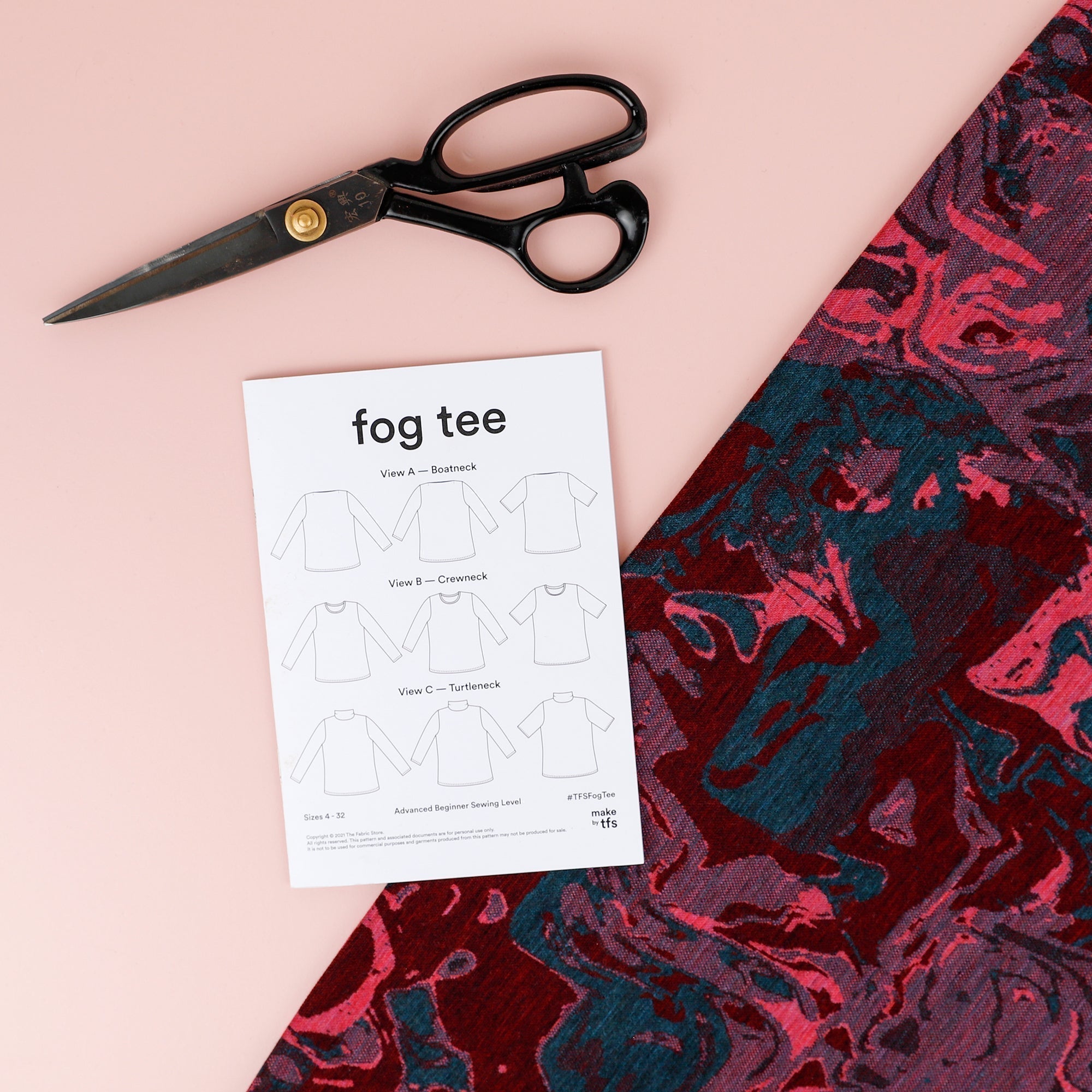It's no secret that we love merino here at TFS! Did you know that merino is one of the world’s oldest breeds of sheep, originating in Spain as far back as the 12th century?! Merino sheep produce extremely fine and soft wool, making fabric that is breathable, moisture-wicking, naturally antibacterial, and suitable for all seasons as well as a huge variety of uses.
Merino wool is well known and loved across the world, with the benefits of this unique fibre widely known. Considering its extremely fine micron, merino wool is a resilient fibre – an excellent alternative to cashmere as it is super soft while still being machine washable! We stock a range of deadstock merino fabrics in stores and online, as well as our exclusively milled range of ZQ merino jerseys.
Above, an example of a beautiful printed deadstock merino jacquard knit fabric.
Uses + Properties
Merino wool is often used to create beautiful knit fabrics, in a variety of weights. Lighter to mid-weight merino jerseys like our ZQ Premium Merino range, are ideal for undergarments and layering pieces, while heavyweight merino fabrics such as fleece, terry, sweatshirting and ponte are ideal for cooler weather, or for creating garments with more structure, such as boxy jumpers or panelled dresses.
Merino is sometimes considered to only be good for cold weather, however thanks to its unique thermal properties it is ideal for all seasons! Merino wool fibres have a natural crimp, which traps air and acts as a fantastic insulator, while its moisture-wicking properties draw sweat away from the skin, keeping you dry and comfortable in summer. Merino is also a great natural alternative to classic sportswear fabrics, that tend to get sweaty and trap odour. Because merino is so soft, it can be worn next to the skin, even by many of those who do not normally tolerate wool. In New Zealand, we've been relying on the benefits of merino for a long time and merino jersey is standard for babies, who are dressed in merino wool garments from birth.
In a snapshot, merino fabrics are:
- Super soft against the skin
- Hypoallergenic
- Cool in summer, warm in winter
- Moisture-wicking and odour resistant
- Often machine washable and fibre resilient
- Quick-drying and naturally static resistant
Above is a stack of various deadstock merino knit fabrics, all great options for a cute baby blanket!
Merino Knits — Sewing Tips
Sewing with merino knits can be quite simple, even for a beginner with little experience! As opposed to cotton knits and synthetic knits, merino knits generally are stable and hold their shape well, making them a great option for first-time knit sewists. The natural elasticity and ease of the merino fibre allows for beautifully smooth and well-finished seams and hems. Because knitted fabrics move and stretch with our bodies, we need to treat them quite differently to woven fabrics and use slightly different sewing techniques and equipment.
- Make sure you pre-wash you merino fabric. As is standard with any natural fibre fabrics, merino wool jersey may incur some shrinkage upon first wash. Be sure to use cool water, a gentle detergent, and avoid tumble drying.
- Use ballpoint pins and a ballpoint machine needle to avoid damaging knit fabric while cutting and sewing.
- Use a sharp pair of fabric scissors for cutting. Blunt or rusted scissors are likely to catch on knit threads and cause pulling or staining.
- Always reserve a few scraps to test your needle and machine settings. Test stitches with the stretch of the fabric and against it. Both directions of the fabric will behave differently and may require slightly different settings.
- Do not stretch your fabric as you sew, as this may cause your sewing to pucker. Make sure you support the weight of your project while you sew. Letting it fall around the machine may cause your fabric to stretch out and put stress on your sewing machine, causing an uneven stitch.
- If you do not have access to an overlocker or serger, use a stretch stitch on your seams, and finish your hems with a zigzag stitch. Using a standard stitch on merino jersey will cause your seams to pop, as soon as you place any stress on them.

Patterns + Beginner Projects
There are loads of great patterns out there for merino knit fabrics! Choose a pattern that is designed for a knit fabric, rather than a woven fabric, and check that the weight of the fabric is appropriate for the pattern.
Absolute beginners could start with a simple DIY project, such as our easy merino baby blanket/wrap while those with a little experience could try whipping up a merino Make by TFS Fog Tee, Mabel (shown below) or Teddy Dress, or perhaps a few merino baby essentials.
If you are looking to try your hand at sewing your own merino garments at home, we're proud to offer one of the most extensive ranges available to the home sewist! We hold an incredible collection of ZQ Premium Merino colours, as well as a seasonal and evolving selection of special deadstock merino weaves, sweatshirtings/terry knits, and activewear blends. As well as solid colors, we also stock a number of super cool striped deadstock merinos, marles and jacquards – these pieces tend to sell out quickly!
